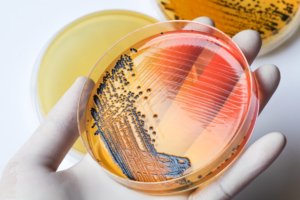The FDA is investigating an outbreak linked to a rare Salmonella serovar that has sickened seven people. The U.S. Food and Drug Administration (FDA) announced an investigation of a Salmonella Potsdam outbreak last week. The agency has not yet determined the food source of the outbreak and the Centers for Disease Control and Prevention has not announced its involvement in the investigation.
It may be the first multistate outbreak linked to this serovar in the U.S.
According to a 2011 study by researchers from the Department of Veterinary Medicine, at Taiwan’s National Chiayi University, eggs from waterfowl and chickens have been found to be a source of the serovar. That seems to have been the case in one of the only documented outbreaks associated with the Salmonella Potsdam, a 2002 outbreak at a restaurant in New South Wales.
The 2002 outbreak included 12 people who ate at the Australian restaurant. Health officials found the outbreak strain in swabs they collected from the egg-based Caesar salad dressing and in the cap of a mayonnaise bottle at the restaurant.

A lab test that is positive for Salmonella.
Salmonella Potsdam isn’t common in the U.S. In fact, just 238 cases were reported between 2006 and 2016, according to data from the CDC. The more common serovars are associated with tens of thousands of cases in the U.S. each year such as Salmonella Enteritidis (83,303), Salmonella Typhimurium (63,773), and Salmonella Newport (47,481).
In 2016, a Salmonella Potsdam outbreak that sickened five people was linked to a Connecticut restaurant. All five people with confirmed cases reported eating at the same restaurant and ordering the same tongue and tripe appetizer. Four more probable cases were identified among customers who also consumed the appetizer.
Symptoms of a Salmonella infection include abdominal cramps, nausea, and diarrhea that can be bloody. These symptoms usually develop within six to 72 hours of exposure and last about a week.
